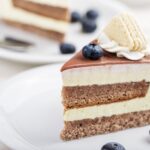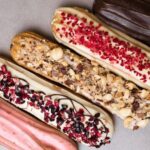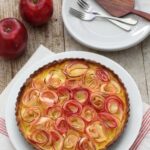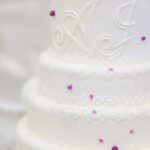Are you looking to up your cake decorating game? One essential tool for achieving professional-looking results is a turntable. In this article, we will show you how to make a turntable for cake decorating, allowing you to spin and decorate your cakes with ease. Whether you are a baking enthusiast or a professional pastry chef, having a DIY turntable can elevate your decorating skills and bring your creations to the next level.
By making your own turntable, you have the advantage of customizing it to suit your specific needs and preferences. Not only does this save you money, but it also gives you the satisfaction of creating something practical with your own hands. This DIY project allows you to exercise your creativity and craft a piece of equipment that is tailored to enhance your cake decorating process.
In the following sections, we will provide step-by-step instructions on how to assemble the DIY turntable, discuss the materials needed, proper usage techniques, as well as address any troubleshooting issues that may arise. Additionally, we will explore different designs and variations for making a DIY turntable for cake decorating – giving you plenty of options to choose from based on your individual requirements.
Get ready to embark on this fun and rewarding project that will undoubtedly refine your cake decorating skills.
Materials Needed
Base and Rotating Platform
To make a DIY turntable for cake decorating, you will need a sturdy base and a rotating platform. For the base, you can use materials such as wood or plastic. The size of the base will depend on the diameter of the rotating platform. The rotating platform can be made from materials like MDF (medium-density fiberboard) or acrylic sheet. The diameter of the rotating platform should be large enough to accommodate the size of cakes you typically work with.
Bearing or Swivel Mechanism
In order for the rotating platform to move smoothly, you will need a bearing or swivel mechanism. This component is crucial for allowing the platform to rotate effortlessly. You can choose from options like ball bearings or lazy Susan bearings, which are readily available at hardware stores. Ensure that the bearing or swivel mechanism is secured firmly to the base and rotating platform for stability.
Gripping Material
To ensure that your cake stays in place while decorating, it’s important to have a gripping material on the surface of the rotating platform. This can be achieved by using non-slip matting or adhesive silicone pads. These materials will provide traction and prevent the cake from sliding around during decorating.
Add-Ons (Optional)
Depending on your preferences, you may also want to consider adding features such as height-adjustable legs, rubber footing for stability, or a non-slip turntable cover for easy cleaning. These add-ons can enhance the functionality and usability of your DIY turntable for cake decorating.
By gathering these materials and following the step-by-step instructions provided in this article, you’ll be on your way to creating your very own customized turntable for cake decorating. Once assembled, this DIY turntable will become an indispensable tool for achieving professional-looking cakes with ease and precision.
Step-by-Step Instructions
To begin making your own DIY turntable for cake decorating, gather the following materials: a Lazy Susan bearing, a wooden round board (about 12 inches in diameter), a smaller piece of plywood or MDF to serve as the base, wood glue, screws, a drill with screwdriver bits, sandpaper, and a ruler. Make sure that the wooden board is smooth and free from any imperfections that could affect the rotation of the turntable.
Step 2: Assembling the Base
Start by attaching the Lazy Susan bearing to the center of the smaller piece of plywood or MDF using screws and a drill. It is important to ensure that it is securely fastened to avoid any wobbling or unstable rotation. Once this is done, apply wood glue to fix the wooden round board on top of the bearing. Allow it to dry completely before moving on to the next step.
Step 3: Sanding and Finishing Touches
After the wood glue has dried, use sandpaper to smooth out any rough edges and ensure that both boards are level and flush with each other. This step is crucial for guaranteeing a seamless rotation when decorating cakes. Once you are satisfied with the smoothness of the turntable, you can choose to varnish or paint it according to your preferences.
Tips for Efficiency:
- Measure twice, cut once: Accurate measurements are key to ensuring a sturdy and functional DIY turntable.
- Use clamps: When applying wood glue, using clamps can help keep everything in place while it dries.
- Test for smooth rotation: Before using your DIY turntable for cake decorating, make sure it rotates smoothly without any resistance.
By following these step-by-step instructions and incorporating these tips and tricks into your process, you can create an effective DIY turntable for cake decorating that will enhance your culinary creativity.
Proper Usage
When using a DIY turntable for cake decorating, it is essential to ensure that the cake is securely in place before beginning the decorating process. Here are some proper usage tips to make the most out of your homemade turntable:
- Securing the Cake: Place a non-slip mat or damp paper towel on the turntable before setting the cake board on top. This will help prevent the cake from sliding around while you decorate. Use a bit of frosting or royal icing to secure the cake board to the turntable for added stability.
- Smooth Icing Techniques: One of the main benefits of using a turntable for cake decorating is the ability to achieve smooth and even icing. To create a smooth finish, hold an offset spatula or icing smoother against the side of the cake while turning the turntable with your other hand. This motion helps distribute the frosting evenly for a seamless look.
- Delicate Designs: When working on delicate designs such as piping intricate patterns or creating fondant accents, gently rotate the turntable with one hand while using your dominant hand for precision piping or detailing. The smooth rotation of the turntable allows for more controlled movements and cleaner designs.
By following these proper usage techniques, you can take full advantage of your DIY turntable for cake decorating and achieve professional-looking results at home. With practice and patience, mastering these skills will elevate your baking creations to a whole new level.
Advantages of DIY Turntable
Making your own turntable for cake decorating offers a multitude of benefits that go beyond just having a functional tool. One of the primary advantages is the cost savings. Purchasing a commercial turntable can be quite expensive, especially for hobby bakers or those just starting out in cake decorating. By creating your own DIY turntable, you can significantly reduce costs and allocate those savings towards other baking supplies or ingredients.
Another advantage of making your own turntable is the ability to customize it according to your preferences and specific needs. Commercial turntables may not always have the exact specifications or features that you desire. With a DIY turntable, you have control over the materials used, size, height, and any additional modifications that you may want to incorporate for personalized functionality.
In addition to cost savings and customization, there is also a sense of satisfaction that comes with creating something practical with your own hands. Building a DIY turntable allows you to engage in a creative and practical project that yields tangible results. It also provides an opportunity to hone your skills in craftsmanship and problem-solving, as well as instilling a sense of pride in using something that you made yourself.
| Advantages | Description |
|---|---|
| Cost Savings | Making your own turntable can significantly reduce costs compared to purchasing a commercial one. |
| Customization | DIY turntables can be tailored to fit specific preferences, such as materials used, size, and additional modifications. |
| Satisfaction | The process of creating something practical with your own hands instills a sense of pride and accomplishment. |
Troubleshooting
When making or using a DIY turntable for cake decorating, there may be some common issues or mistakes that could arise. It’s important to address these potential problems and provide solutions to troubleshoot them effectively. Here are some common issues and their corresponding solutions:
1. Uneven rotation: If the turntable doesn’t rotate smoothly or evenly, it can make it difficult to decorate the cake seamlessly. To troubleshoot this issue, check the base of the turntable for any obstructions or uneven surface. If the problem persists, consider adding lubricant to the pivot point for smoother rotation.
2. Wobbling or instability: A wobbly turntable can make it challenging to decorate a cake with precision. To address this issue, ensure that the base and top of the turntable are securely attached. If wobbling continues, double-check that all components are level and adjust as necessary.
3. Difficulty securing the cake: If you’re having trouble keeping the cake in place while decorating, consider using a non-slip mat or adding a grippy surface to the top of your DIY turntable to prevent slipping. Additionally, make sure that your cake is properly centered on the turntable before securing it in place with icing or other methods.
It’s important to troubleshoot any issues that may arise when making or using a DIY turntable for cake decorating in order to ensure a smooth and enjoyable decorating process.
- Uneven rotation: Check for obstructions and add lubricant if needed
- Wobbling or instability: Ensure all components are securely attached and level
- Difficulty securing the cake: Use a non-slip mat and center the cake properly
Alternative Designs
When it comes to making a DIY turntable for cake decorating, there are various designs and variations that you can explore. One alternative design is to create a larger size turntable for bigger cakes or projects that require more space for decorating.
This can be achieved by using a sturdy base and a larger rotating platform, allowing you to work on cakes of different sizes with ease. Additionally, consider using heavy-duty materials for the construction of a larger turntable to ensure stability and durability.
Another alternative design involves using different materials to make the rotating platform of the DIY turntable. While wood is commonly used for its sturdiness and ease of customization, some decorators prefer using acrylic or plastic for a smoother surface that makes it easier to maneuver the cake during decorating. Each material has its own advantages and aesthetics, so choosing the right one depends on your personal preferences and specific needs.
Finally, exploring alternative styles for the DIY turntable can add an element of creativity to your cake decorating process. For example, you can customize the look of your turntable by adding decorative elements or embellishments that match your personal style or theme of your kitchen. Additionally, consider incorporating features such as height-adjustable platforms or ergonomic designs that cater to your comfort and convenience while working on intricate cake decorations.
With these alternative designs and variations, you have the flexibility to create a DIY turntable for cake decorating that suits your individual preferences and specific requirements. Whether it’s building a larger turntable, experimenting with different materials, or customizing the style to reflect your personal taste, this DIY project allows you to tailor the turntable to enhance your cake decorating experience.
| Design Variation | Advantages |
|---|---|
| Larger Size | Able to decorate bigger cakes with ease |
| Different Materials | Provides options for smoother surface or customization |
| Customized Style | Adds personal touch and enhances comfort during decorating |
Final Thoughts
In conclusion, making your own turntable for cake decorating can be a fun and rewarding DIY project. Not only does it allow for cost savings and customization, but it also provides a sense of satisfaction in creating something practical to enhance your cake decorating skills. By following the step-by-step instructions and using the recommended materials, you can easily assemble a DIY turntable that meets your specific needs and preferences.
The advantages of making your own turntable are numerous. Not only will you save money by avoiding the purchase of an expensive commercial turntable, but you will also have the opportunity to customize the design to fit your unique style and décor. This level of personalization adds an extra element of creativity to your cake decorating process, elevating the entire experience.
In addition, troubleshooting common issues when making or using a DIY turntable is important to ensure optimal performance. By addressing potential problems and providing solutions, you can avoid frustration and achieve smooth icing and delicate designs with ease.
Remember that there are alternative designs and variations available for DIY turntables, so don’t be afraid to experiment and find the perfect fit for your cake decorating endeavors. Ultimately, making your own turntable for cake decorating opens up a world of creative possibilities while enhancing your skills as a baker and decorator.
Frequently Asked Questions
What Can I Use if I Don’t Have a Cake Turntable?
If you don’t have a cake turntable, there are several alternatives you can use to achieve similar results. One option is to place a damp kitchen towel on your work surface and then place a large plate or cutting board on top. The damp towel will help keep the plate or board from slipping as you decorate your cake.
Another alternative is to use an upside-down bowl as a makeshift turntable. Simply place your cake on top of the inverted bowl and carefully spin it as you frost and decorate.
How Do You Make a Spinning Cake Board?
Making a spinning cake board is relatively simple if you have some basic materials and tools. You can create one by attaching a piece of non-slip matting to the bottom of a round piece of plywood or MDF board using strong adhesive.
Next, attach a PVC coupling fitting to the center of the board using epoxy glue, making sure it’s sturdy and secure. Once the glue has set, insert a PVC pipe into the coupling fitting and your spinning cake board is ready for use!
Is a Cake Turntable Necessary?
While a cake turntable isn’t absolutely necessary, it can make the process of decorating cakes much easier and more professional-looking. A turntable allows for smooth, controlled rotation of the cake while you apply frosting or decorations, which can result in more even coverage and neater designs.
It also reduces the need to handle the cake directly with your hands, minimizing the risk of damaging your work. However, if you’re comfortable working without one or prefer using alternative methods, it’s certainly possible to achieve great results without a cake turntable.

Welcome to my blog about home and family. This blog is a place where I will share my thoughts, ideas, and experiences related to these important topics. I am a stay-at-home mom with two young children. I hope you enjoy reading it! and may find some helpful tips and ideas that will make your home and family life even better!





